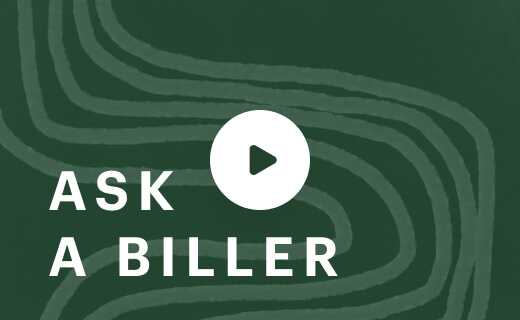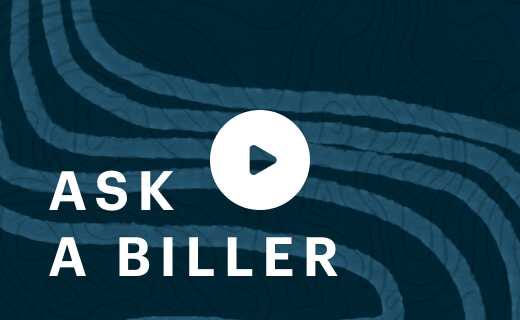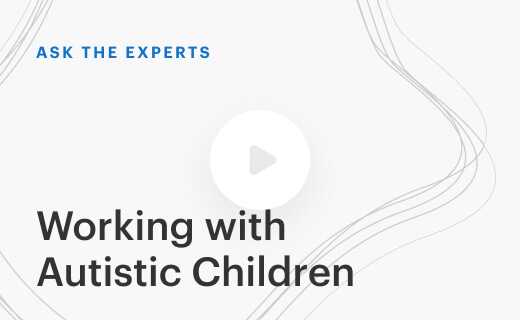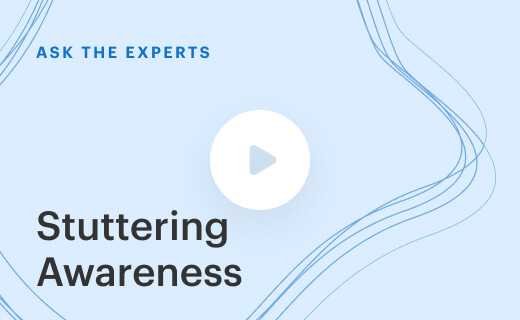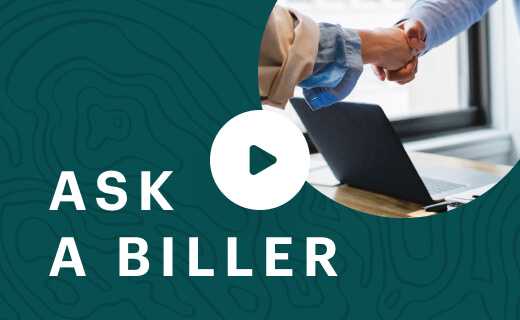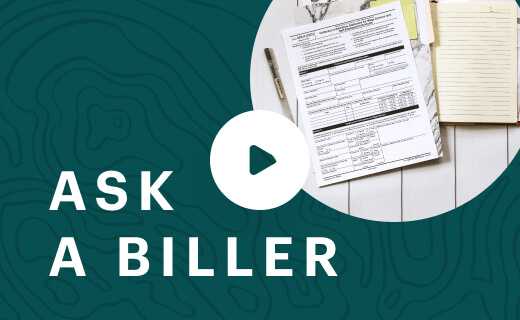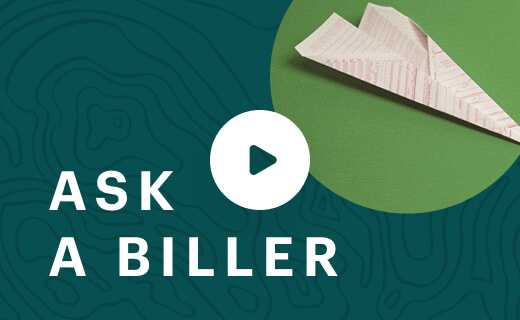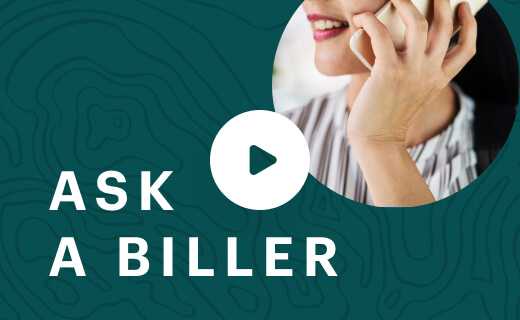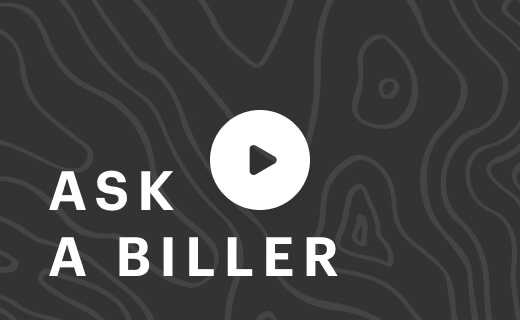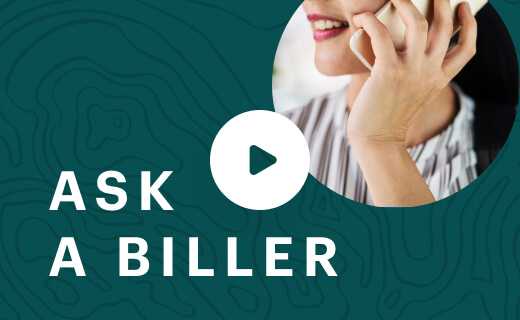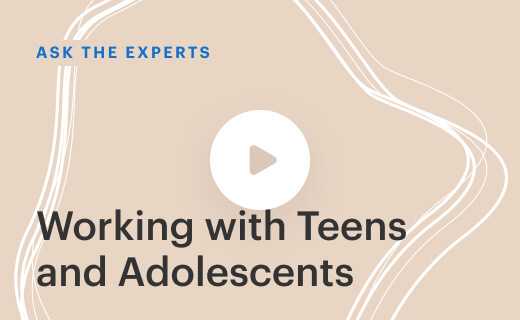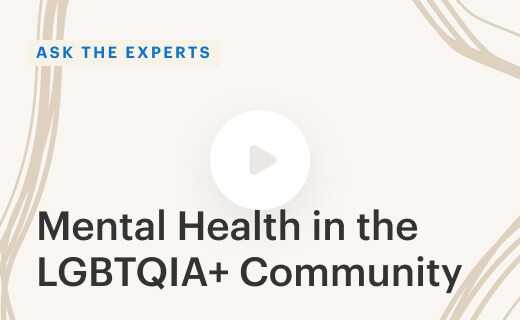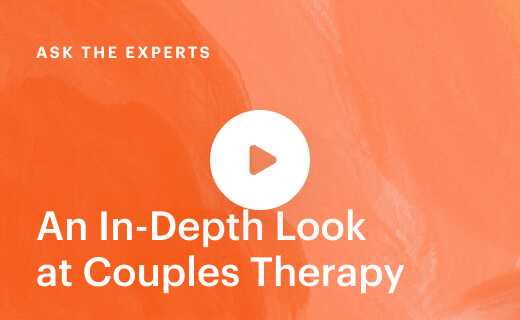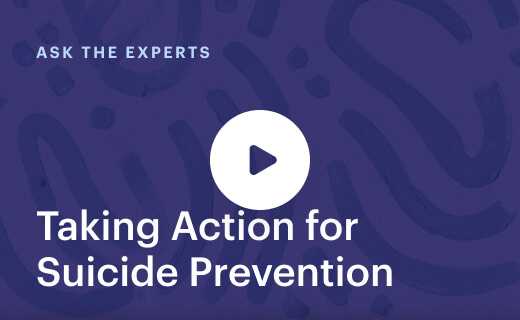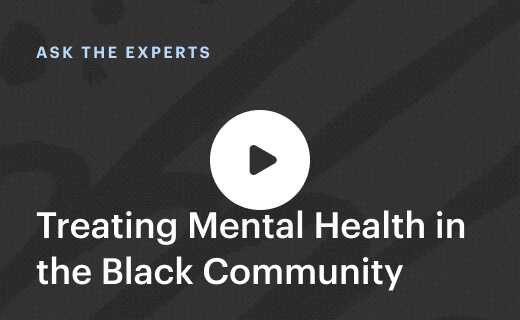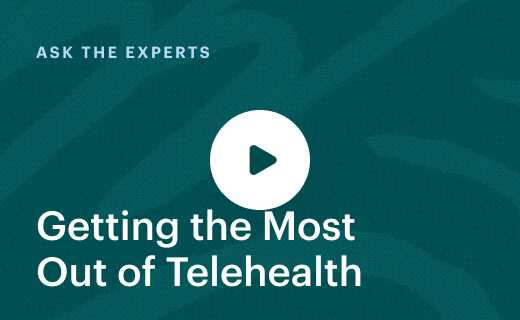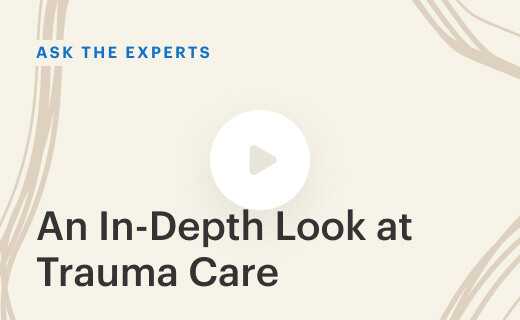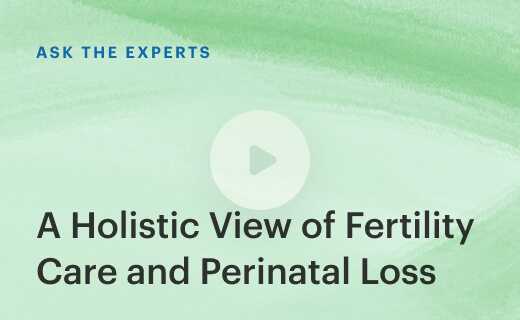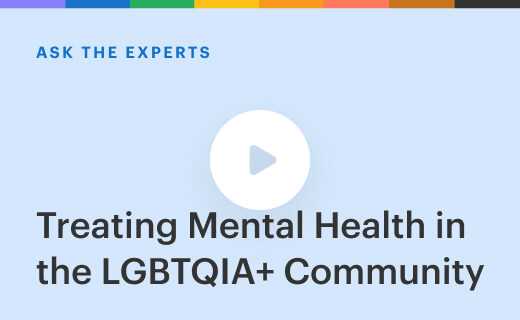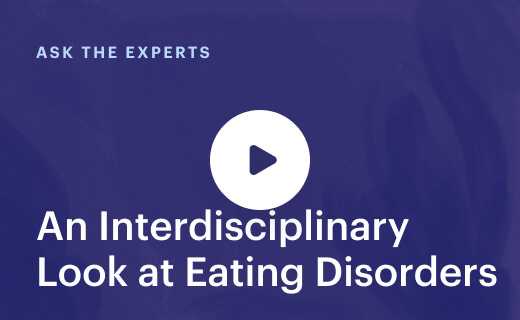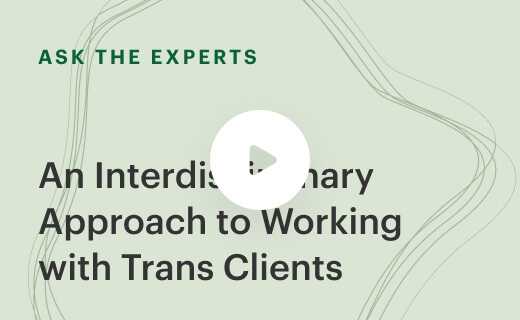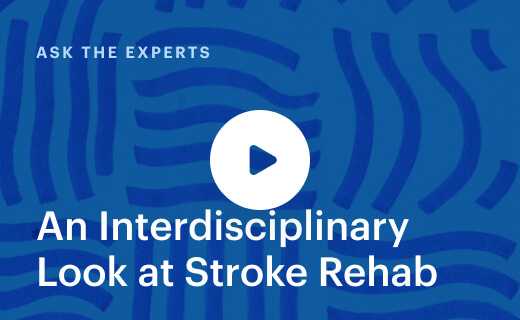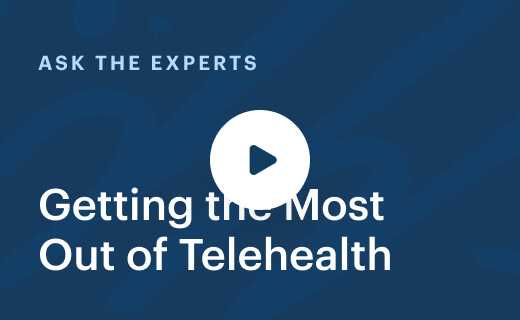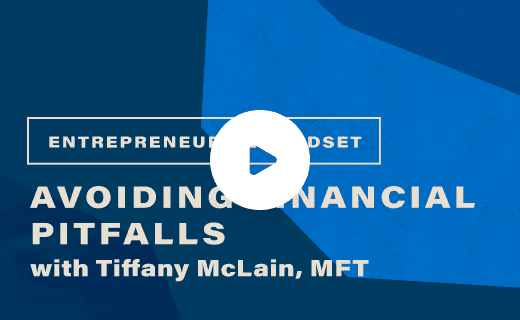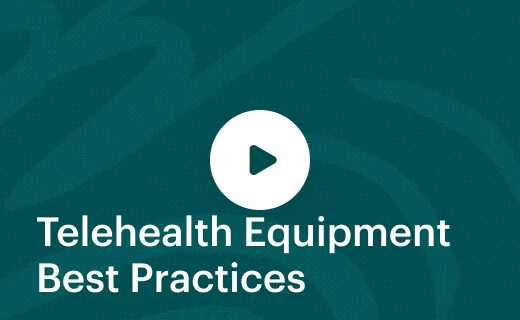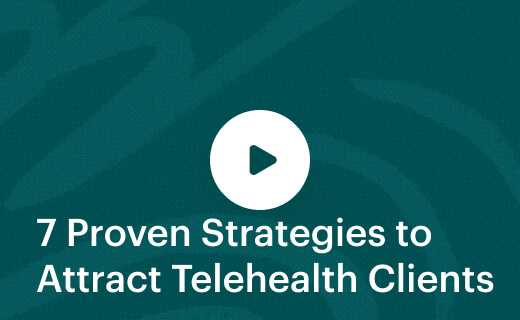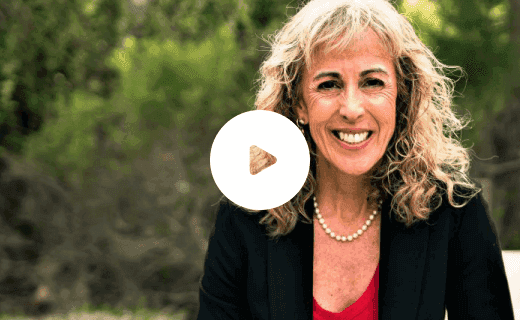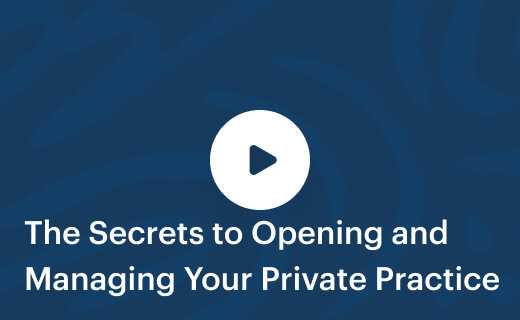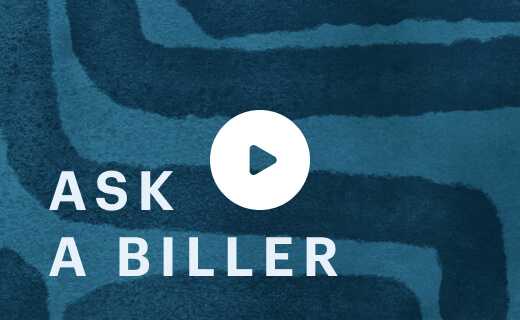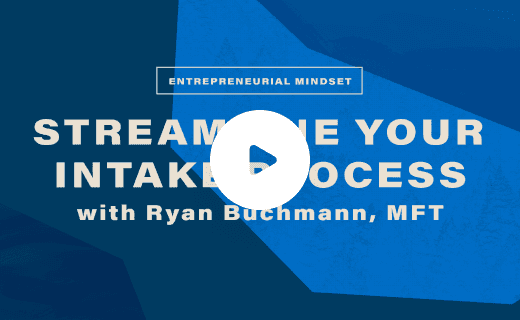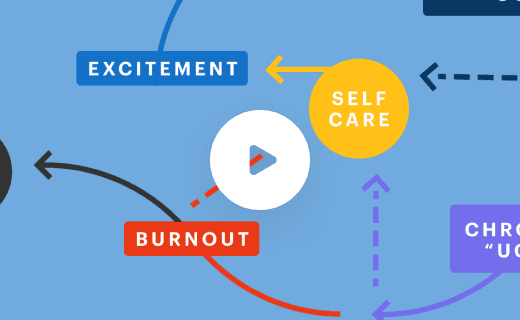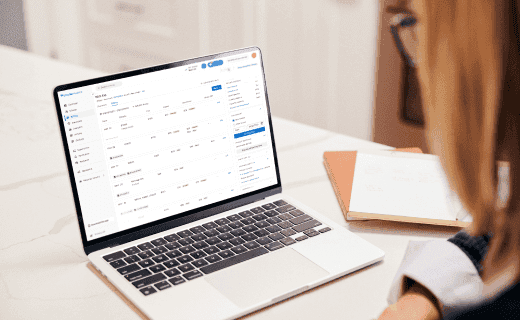An Interdisciplinary Look at Eating Disorders
Free 30-day trial, access all this & more:
Want to know about other great webinars?
Join Taylor Wolfram, MS, RDN, LDN, Dr. Ebony Butler, and Kayla Stanton, MS, RDN, CDN as they discuss eating disorder treatment, and how to help clients with eating disorder recovery.
Facilitated by Adrien Paczosa, RD, LD, CEDRD-S, this group of experts answers questions from supporting clients of all ages who are different types of eating disorders, how intersections of systemic issues can impact treatment for people of color, and best practices for parents whose children may have an eating disorder.
Together, they encourage a holistic and collaborative approach to eating disorder treatment, and ways you can start getting involved and offer the best possible care.
- Introductions
- For those of us new to working with eating disorders, how do you best screen and recognize eating disorders?
- Is there an intersectionality between cultural values, family expectations, negative social media influence, and body positivity?
- How do intersections of systemic issues (i.g., race, fat phobia) impact treatment for black, brown, indigenous, and people of color clients?
- How valuable is interdisciplinary collaboration with clients who have eating disorders? Is this something you require?
- Do you all subscribe to the intuitive eating model of nutrition, and if so, how do you implement this model with your clients?
- What are the best practices for supporting teens with eating disorder?
- How can parents best support their teenage and adolescents who are restricting calories?
- What are some tangible exercises and tools you use with eating disorder clients to move them towards recovery?
- How are each of you adapting and modifying your current practices due to the recent limitations of COVID-19?
1. Introductions
Adrien Paczosa: Hey guys, and welcome to today’s webinar, Ask the Experts: An… Holy bananas, I can’t talk today. We’re just going to have a fun time, I think. It’s Ask the Experts: An Interdisciplinary Look at Eating Disorders. I’m your host, Adrien Paczosa, and we’re going to go through and answer all y’all’s great questions that you submitted and really get to know all of our experts today.
I’m so glad you guys are here. And just so that you know, that it is being recorded, so if you ever have any questions or want to go back and reread or relisten to everything, it’ll be sent to you after today’s webinar. But let me introduce myself. Like I said, my name is Adrien Paczosa. I’m a registered dietician and certified eating disorder dietician and supervisor. I’m in Austin, Texas, and I have a group practice called I Live Well Nutrition.
We have about eight dieticians in multiple locations, and we specialize in eating disorders, addiction, mental health, and developmental disorders. I’m also a supervisor for any of the dieticians that are wanting to become a CEDRD. Also, I teach you guys how to start and run a private practice through my podcast, Fearless Practitioners, and business coaching. So today, what we’re going to really look about is we’re going to learn about all of our speakers. We’re going to answer all of your wonderful questions, so thank you so much for submitting those. And then we’re going to have some closing thoughts from all of our experts. But first, let’s get to know these fabulous women on our panel. I’m going to have each of them introduce themselves. First, we’ve got Dr. Ebony Butler.
Ebony Butler: Hi. Thank you guys so much for being here. I am a licensed psychologist in Austin. I am also a food relationship strategist. My practice as a therapist includes working with women and people who are recovering from trauma and helping them identify their wants and needs in a way that is effective for them, also helping them to develop more into their identity, who they want to become, who they see themselves becoming, working on effective communication and emotion regulation worksheets. As a food relationship strategist, I’m also helping women, especially Black women, recover from diet culture and approaching their lives and relationships with food from a stance of empowerment versus the typical feelings of failure and that type of behavior that is associated with a lot of guilt and shame.
Adrien Paczosa: Awesome. Thank you, Dr. Ebony. Next we’ve got Taylor. Tell us a little bit about you, Taylor.
Taylor Wolfram: I’m Taylor Wolfram. I am a registered dietician in private practice in Chicago, Illinois. I specialize in intuitive eating, body image, weight inclusive dietetics, and also vegan nutrition for a lot of folks. I’m an ethical vegan myself, and so I work with those who also are. Not just vegans, I work with everyone. But for some people who might find that they have kind of an interwoven relationship with their plant-based eating, maybe some disordered eating in there along with their ethical motivation. So I really love working with that population and helping folks sort out any disordered eating that might be going on for them.
Adrien Paczosa: Awesome. Thank you so much. Okay, and our next expert is Kayla. Welcome, Kayla. Introduce yourself to all of our fabulous participants.
Kayla Stanton: Happy to. My name’s Kayla Stanton. I’m a registered dietician. I have a private practice, Stanton Nutrition Counseling. I’m not one for fancy names. But Stanton Nutrition Counseling in Southern Indiana. I have a background in a lot of different areas of dietetics, primarily clinical. So I’ve done a lot of work with medical nutrition therapy, and I’d say only somewhat recently dove into the world of eating disorders, but it has become my bread and butter. And so about 95% of my entire practice is specifically with eating disorder clients. And I work with all ages. I work with all genders. I work with pretty much everyone in this area because I’m the only dietician in this area. So if there’s any dieticians out there, I would love to share my current monopoly. Feel free to come to Indiana.
Adrien Paczosa: I love that. Well, thank you so much for sharing, and welcome to all of our fabulous panelists. We are just going to jump right into the questions. Our first one comes from Mary F. “For those of us new to working with eating disorders, how do you best screen and recognize eating disorders?” And all of our panelists are going to answer this, so we’re going to start with Taylor. How do you answer this question?
2. For those of us new to working with eating disorders, how do you best screen and recognize eating disorders?
Taylor Wolfram: Yeah, this is a really great question, and another dietician just asked me this recently as well. And I feel like this is so important, even if you don’t work in the field of eating disorders. Obviously a lot of us, even if that’s not our specialty, might be coming into contact with folks who have an eating disorder, whether they know it or not. So I typically have a discovery call or sort of an informal informational call with potential new clients before we officially work together, so just five to 10 minutes on the phone for me to get to know them a little bit more to make sure that we’re a good fit.
So I personally don’t take on clients who are actively really struggling with an eating disorder. I focus more on the disordered eating end of the spectrum, chronic dieting, but I will work with folks who are kind of in stable recovery. I just want to put that out there. I know Kayla has a lot more experience with people who are really in the thick of their eating disorder. So an obvious question to ask, of course, whether it’s in that first screening call, or even in your first session, is, have you ever been diagnosed with an eating disorder?
But even if you haven’t received a formal diagnosis, there are a few key questions that I like to ask around how much time they spend thinking about food and their body and their weight. Do they find that that’s always on their mind, they’re kind of obsessing about it? Do they have a lot of guilt and shame associated with those things? And maybe some more food-related questions, like, are they following any sort of strict diet? Do they have any sort of food rules?
Are there foods they feel really out of control around versus foods they might consider safe foods? So those are questions that I like to ask to give me a better idea of what I might be dealing with. Now, as a registered dietician. I’m not making eating disorder diagnoses, and so for that, I would collaborate with the care team. And I think we have a question about that coming up soon.
Adrien Paczosa: Wonderful. Thank you, Taylor. Kayla, how about you? How would you answer this question?
Kayla Stanton: I love everything that Taylor had to say. Those are just really important concepts. A couple of the more, I guess, true screening tools, there’s one called the EAT-26, which is 26 questions. And let me back up. I should say I’m typically the one receiving these referrals, so I’m usually not doing the screening, but I do try and coach other healthcare providers on how to do the screening. So EAT-26 is a great resource. I believe that has been around for a bit now, and it’s standardized.
There’s also a very easy screening called SCOFF. SCOFF is an acronym, and it’s five questions, S-C-O-F-F. I won’t go into that. We’ll go into that afterwards, I’m sure. But it basically just talks about how people feel about food. It deals with, do they make themselves sick? It deals with, do they feel like they don’t have any control over eating? Have they dropped more than one stone, that’s, oh, it’s about 14 pounds, in the last three months? Do they feel fat when other people say that they are thin?
Do they have food dominating their life? It’s also standardized and very easy to use. You don’t have to have any… I’ve had chiropractors who have been able to use SCOFF and successfully help to steer people in the right direction. Outside of those, the only thing I would really add to what Taylor would say would be, if you have any real precipitous weight change, it doesn’t always have to be weight loss. Sometimes it can be really significant weight gain, or we can see issues with body image disturbance. All of a sudden, someone who was okay with their body is very, very upset with their body and doesn’t like it.
Women who lose their period is a big thing that we look out for. We want to try and catch them before they go get put on an oral birth control, because that can actually cover up a problem. So those are some of the more clinical things that we look for. Another one, if you know somebody or have a client who gets dizzy when they stand up, that’s orthostatic hypotension, and that’s a very, very common thing that we look for in malnutrition. So just a few other things to add to it.
Adrien Paczosa: Wonderful. Thank you, Kayla. Dr. Ebony, how about you? How would you answer this question?
Ebony Butler: Yeah. I would do a lot of the things that both Taylor and Kayla said, but a lot of the information that I gather, some of it is going to be on the intake form. So I’m asking specifically, “Have you been formally diagnosed with an eating disorder or if you consider yourself to have some disordered eating patterns? And we can talk more about that in session.” Because I am not a practice where I specifically work with clients who have eating disorders, that’s not my area of expertise, but because I am a trauma experts, I know that this is a lot of what we’ve seen, and I know that this sometimes will come up.
So I’m asking those questions on those forms. When we’re in session, a lot of my clients come find me me because they think that because I’m a food relationship strategist, I’m going to tell them how to lose weight, but a lot of people will come to me because of it. And then we tend to have that conversation around dining behavior. I might explain to them actually what I do. We have those conversations and then it will kind of just unfold itself around, “What are the types of behaviors that you’re engaging in? Is there a restriction, severe restriction? Is there over-consumption?” That kind of thing.
I also ask about body checking, habits around constantly checking bodies, scales, constantly stepping on and off the scale. So while we are focused on eating disorders, we also are focusing on body dysmorphia and a lot of issues around just basic behaviors, as they all tie in together. And I typically just use the DSM as something that’s a screening tool or as an educational kind of tool or resource to help clients even understand what’s happening with them. Those are the ways that I screen and recognize.
Adrien Paczosa: Thank you, Dr. Ebony. And I love that everybody had different perspectives. And for all y’all that are listening, I think, trust your intuition as a clinician. You’re the professional. If it feels funky, it probably is funky. And also reach out to your supervisors to double check yourself. Well, let’s move on to the next question. Question number two, this came from Laurie R. “Is there an intersectionality between cultural values, family expectations, negative social media influence, and body positivity?” I’m going to go to Taylor and Dr. Ebony for this. Taylor, how would you answer this question?
3. Is there an intersectionality between cultural values, family expectations, negative social media influence, and body positivity?
Taylor Wolfram: I really want to let Dr. Ebony speak more to the body of this question, but I did want to point out, since this question uses the term intersectionality, which has really blown up in the past five years, I think online and on social media, to acknowledge where it came from. So it was created by Kimberle Crenshaw in an academic paper, actually, in the late ’80s. She studied law, and it was specifically about the overlap of different identities, specifically sex and race, specifically for Black women in America, and how those cases were handled, discrimination cases.
So if someone was experiencing both sex discrimination and race discrimination, how that is different than if someone is just experiencing sex discrimination or race discrimination. That is something that specifically speaks to Black women, but I know that the term, the way it’s been used more recently has been broader in terms of lots of different sorts of identities and oppressions intersecting.
Adrien Paczosa: Thank you so much for that clarification, Taylor. Okay, Dr. Ebony, help us understand this question.
Ebony Butler: Yeah, I think that I’m going to plug in the word influence, and I don’t know if this is what Laurie meant, but I think the… I don’t want to put words in her mouth. To me, I can answer this better if I’m reading the question as, what influence does culture, family, social media have on body positivity? And they definitely have a large impact on it. If you think about what your cultures are, if you think about what your family’s cultures, values, traditions are, those things are going to be taught to you from birth.
Those things are going to be things that are going to be ingrained in you, that’s going to be your core beliefs. Those are going to make up the primary messages that you receive around body image, around food, around acceptability, around what you’re supposed to be doing as it relates to gender specific behaviors around food and body image, athleticism, that kind of thing, movement. So yes, culture definitely impacts it. Your family’s ideals, what your family believes as far as what they see as acceptable.
Social media is a very large influencer of all of this. I mean, we could see at the beginning of quarantine how the messaging around quarantine 50 kind of took off like a wildfire, and like, “Don’t gain weight.” And as soon as that became the message, a lot of ads around exercising equipment started coming out. At home, here are some things that you can do, and here are some things that you can do to stay on the right side of things. So I think we would be remiss if we didn’t think that all of these things played into the whole body positivity movement. I even would go as far as to say that body positivity has changed because of media, and that the movement didn’t start out to what it is now.
It’s almost like it’s been co-opted by thin white women who have taken up the space and made it their own. And that is problematic in and of itself because actually, they’re the opposite of why the body positivity movement started, which was to shed light, give space, center people in fat bodies, especially BIPOC bodies, and just altogether, fat bodies that have been left out of the conversation, left out of the marketing, left out of mainstream. And that space has now become mainstream.
So all of these things and our own internal biases around fat phobia or own internal biases around body size tends to come in and overshadow a lot of these movements that have been made to be more inclusive. They actually ended up being really exclusive. So we can’t not say that these things have been influenced, because they definitely are, and they are constantly being influenced.
Adrien Paczosa: That helps us so much to really understand. Thank you so much, Dr. Ebony. That was wonderful. Let’s jump onto the next question from Carly G. “How do intersections of systemic issues, i.g., race, fat phobia, impact treatment for black, brown, indigenous, and people of color clients?” Dr. Ebony, can you explain this question or help us understand that a little bit more?
4. How do intersections of systemic issues (i.g., race, fat phobia) impact treatment for black, brown, indigenous, and people of color clients?
Ebony Butler: Yeah. I think that representation… So when we’re thinking about the typical picture of an eating disorder, I’m remembering even coming up before I became a psychologist, the picture of an eating disorder was not people who look like me. So we’ve been left out of this conversation altogether, so representation is huge. And so if we’re thinking about systemic issues, then we are talking about resources, access to resources, availability of people who know what it’s like to be a person of color struggling with an eating disorder.
What are the things that are kind of in place systemically that have led to issues that create trauma that is largely related to eating disorders? We’re talking about food deserts, people growing up in food deserts and rowing up not knowing where food is going to come from. It’s that level of uncertainty. Also just a lot of the resources around material, education, things are being talked about in school, things that are being dismissed because you are in a Black or brown body.
So when you go to school and you’re thin, or you go to the doctor’s office… I use the doctor’s office because that is something that definitely resonates. When you go to the doctor’s office in a smaller body, your conversation is very different for Black and brown people around what is needed of you, what is expected of you. If you’re thin, the conversation of weight doesn’t come up. The conversation is, “Keep doing what you’re doing.”
But if you come in in a larger body as a Black or brown person, then you’re told, “Everything is related to your weight.” I actually had a client this week whose doctor told her that her weight was related to fibroids. And I know that’s not the truth, because I had 10 fibroids, and I was bodybuilding at the time and I was 118 pounds, but nobody said anything about that because that was on the acceptable end of things.
So bringing that conversation into therapy around how just misguided, how deeply rooted in white supremacy is this idea what is the acceptable dieting culture, body size, all of these things. So when you’re thinking about systemic issues that impact Black and brown, indigenous people of color, we have to talk about white supremacy and we have to talk about ways in which racism has created certain areas of our towns and our communities to be places where people are more traumatized.
We have to talk about the trauma that lives in our bodies and ways that people are gravitating towards eating disorders as a form of control. All of these things are interconnected, and when we’re thinking about just Black people being savages, brown people being uncontrollable or insatiable in their appetite, we’re dismissing and leaving out the people who are responsible, the systems that are responsible for these things happening.
So we definitely got to begin to have these conversations, and they definitely impact it. As therapists, we’ve got to educate ourselves enough as practitioners to be able to have these conversations in the room and even have these conversations amongst peers. I don’t think that we get anywhere, honestly, being afraid and shying away from these types of conversations.
Adrien Paczosa: Oh, I love that. Thank you so much, Dr. Ebony. And I know this is a hot topic, and I know in the dietetic world, we’re starting to really open up this conversation, so thank you so much for answering that. And I can’t wait to have more conversations like that and really dive into it more. Okay. Question number four from Susan. “How valuable is interdisciplinary collaboration with clients who have eating disorders? Is this something you require?” I love this question, Susan. So Kayla, how would you answer this?
5. How valuable is interdisciplinary collaboration with clients who have eating disorders? Is this something you require?
Kayla Stanton: Extremely. The purpose of this webinar today, it’s extremely valuable. When I talk to… Usually I am either the first or the second person that somebody connects with with regards to an eating disorder. Either they’ve been referred to me from a therapist who says, “well, you need a dietician on board,” or they come to me for some of the reasons we’ve already listed. Maybe they have had troubles with weight, or they’re having a lot of digestive issues. We’ll get into that a little more and. Or they’ve done so many different diets, and they don’t know how to eat, so we’re discovering that.
And I always refer them to a team. We always, always talk in the form of your team. And when I talk about a team, at minimum, I’m talking about a therapist, a dietician, and a doctor, a primary care provider. Ideally, would love to have a psychiatrist on board. In some cases, we need PT and OT, speech therapy in some cases. There’s lots of people that can be a part of the team, but at minimum, I love to see all of my clients have at least a dietician, a therapist, and a primary care provider.
And we want those members to be informed in eating disorders. It actually does much more harm when people on a team are not informed on eating disorders. And I think Dr. Ebony handled that perfectly when she brought that idea up of discrimination in the healthcare system. So having a team can actually help to better inform us as practitioners on any preconceived notions that we might have or stereotypes that we might have that would hinder care for our clients. We know in this space that eating disorders don’t discriminate. They don’t discriminate on sex on gender, on age, on socioeconomic status, on background, but providers do.
And so we really want to be very intentional on who we have as a part of that team, and just making sure we’re not checking the boxes and saying, “Okay, cool. You’re seeing a doctor? Great.” Because what messages are they getting in that environment? And I wanted to add to something Dr. Ebony mentioned earlier. I myself had a new client in my office. History of some female cancer and was going in for a follow-up following a really invasive surgery. Told her doctor, “I’m having pain following the surgery.” Pain was not addressed whatsoever. It was a follow-up for surgery. The pain was not addressed, but she’s in a larger body, so the doctor told her that she would have to lose weight, or they would have to resort to drastic measures.
So this idea of things like bariatric surgery, of really invasive, drastic measures are being placed. And that doctor has no clue that my client is dealing with an eating disorder. And so we see that our clients are getting bombarded with messages, so yes, it’s extremely valuable that we have an interdisciplinary team, but we need to be very judicious and make sure that the people on that team are well-informed.
I will never disparage another healthcare provider, even one who’s not ED informed. I’m not going to disparage them, but there have been times where I have encouraged a client to go find someone else, just to find somebody else who’s going to support you, because it’s dangerous for you to be in that place. I will add, there’s a couple Facebook groups that I am a part of that are really wonderful. One of them is Eating Disorder Professionals Resource Network. And that is just this humongous collaboration of eating disorder professionals from all over the world.
And it certainly doesn’t replace your own clinical judgment and your own knowledge building, but it’s been great. And for dieticians specifically, there’s one called EDRD Pro. EDRD Pro. I realized I said that very fast. So it’s really good to be able to bounce ideas. I’m frequently sending faxes, sending updates, get phone calls. I’m talking with therapists and doctors probably 15 to 20%. I’m collaborating my time with the rest of the people on their team.
Adrien Paczosa: Thank you so much, Kayla. And I have really love that emphasis on knowing the providers. Well, let’s also hear from Taylor on how you would… What are your thoughts on this question?
Taylor Wolfram: Yeah. Oh my gosh. I really love what Kayla had to say, because I think in an ideal world, the team would all be there. Everyone would work together. Everyone would be super educated and specialized. And in reality, that’s really not the case. So oftentimes we do have to advocate for our clients too, and do a little bit of educating or letting, in my case, physicians know… I find most often with PCPs, “Okay. Here’s how often we need weight checks. Yes, we need these labs and an EKG and maybe DEXA, and those things that we can’t just assume, “Oh, you’re seeing your PCP. You’re covered.”
Also check in and make sure that they’re getting the medical care that they need. And if not, like Kayla said, to maybe shop around for someone who’s a little bit more specialized if they’re not meeting their needs. But for me, definitely absolutely critical. Like Kayla said, for any of my clients who have eating disorders, the therapist is probably the other care provider that I talk to the most.
We might even have standing weekly calls, checking in, collaborating on our approach, making sure everyone’s on the same page. I’m in outpatient, so is outpatient level of care still appropriate? Those sorts of things. And of course, are we getting the information we need? Who’s checking weights? And then information from the doctor and all of that. So absolutely critical, for sure.
Adrien Paczosa: Thank you so much, Taylor, for sharing. And I think for all y’all that are listening, I think this is twofold. One, getting to know your community will only help you build referrals and help your business to continue to grow as an outside provider, and really connects you with the eating disorder community. But then also, it really helps you to bounce ideas off of. So building up that collaboration is so important. Well, let’s move on to the next question. Question number five from Kaitlin. I think this probably is somebody from the South. “Do y’all subscribe to the intuitive eating model of nutrition, and if so, how do you implement this model with your clients?” All of our panelists are going to answer this, so Taylor, tell us how you’ve added intuitive eating.
6. Do you all subscribe to the intuitive eating model of nutrition, and if so, how do you implement this model with your clients?
Taylor Wolfram: Yeah. So I’d say that full-blown intuitive eating isn’t necessarily appropriate for someone who’s really actively struggling with an eating disorder, but kind of the essence of the intuitive eating principles can absolutely be used through the recovery process. And I really love… There’s an article by Evelyn Tribole, who’s one of the co-founders of The Intuitive Eating Framework. She wrote an article about this specific topic. How can you use intuitive eating in eating disorders treatment or eating disorders recovery? Because it is different than someone who isn’t struggling with an eating disorder who can just go out and apply the intuitive eating principles. So I would definitely say it’s nuanced, and to of course get some training and work with your supervisor.
Adrien Paczosa: Great. Great. And that article, I think, will be in our references as well. Okay, Dr. Ebony, how about you? How would you answer this question?
Ebony Butler: Yeah. I use it in my work in therapy and as a food relationship strategist, so when I’m providing coaching in my online program. I don’t use the full model, as I’m not specifically trained in the full model, but I do, like Taylor said, I love the principles. And I think the essence of the principles is something that a lot of people can identify with.
I recommend the book all the time, but we are talking about letting go of diet culture and making peace with food, those kinds of things. I do talk about that in therapy, as we’re talking about eating patterns or we’re talking about trying to get more informed in listening more to your bodies, especially if you’re a trauma survivor, learning how to listen to your body more and listen to your hunger and fullness cues. We talk about that in therapy a lot, and so it comes up there.
Adrien Paczosa: Oh, thank you so much for sharing. Dr. Ebony. Okay, Kayla, how about you?
Kayla Stanton: I love the shout-out to Evelyn Tribole. I think that their work on Intuitive Eating Framework is awesome. I would agree with Taylor a little bit from the dietetic standpoint, not always appropriate, but I like to insert little nuggets of intuitive eating at all levels of ED care, no matter where the person’s at. From the talks that we have about it, a lot of my clients have this idea like, “I want to be an intuitive eater.” It becomes a goal of sense. So like, “What can I do today to try and become more of an intuitive eater?” So it’s not necessarily, let’s prescribe to all the framework, it’s, what small steps can we take to be able to have it look more like that. And what we do is, my goal is always to return autonomy in eating disorder care.
So depending on where a person’s at, all the choices are taken away, in a sense, in a severe eating disorder. You follow this meal plan, you do this. We have to restore weight. We have to get you medically stable. And then my goal is always, let’s return back autonomy piece by piece. And I love to incorporate the intuitive eating worksheets into that. Those are actually a resource that’s on the intuitive eating website that really go along well with the workbook.
So there’s an intuitive eating assessment on there, and we can kind of use it to see, “Well, where were you here, and where were you at this point?” And there’s also just a lot of really great work. If you’re not familiar with intuitive eating, it also handles the idea of body image and physical activity, joyful movement. There’s a lot that goes into it, so I love touching on it. And I’d probably say we touch on at least a topic of intuitive eating, even if it’s a little nugget, just about every session that I have with most of my clients, because that becomes this really neat goal, a recovery type goal for them to be able to listen to their body.
Adrien Paczosa: I love that. I think having it spiced in throughout as you’re working with clients… When I’m working with my supervisees, I always say, “Use intuitive eating, but be mindful. Sometimes those sneaky eating disorders love to pull it on, and I’m intuitively eating and I’m listening to my body, and the eating disorder is now back in restriction mode or behavior mode.” So I always tell clinicians, “Be mindful to check in if the eating disorder hasn’t picked up this new way of spicing up their eating disorder behaviors with intuitive eating.”
Those eating disorders tend to pop up in behavior mode in lots of different ways, so always use a caution when you’re starting to notice, how is this not intuitive eating anymore? Well, let’s move on to the next question. Question number six from Jaynay. “What are the best practices for supporting teens with eating disorder?” Oh, this is such a great question. Okay, Kayla, how can we best support our teens?
7. What are the best practices for supporting teens with eating disorder?
Kayla Stanton: I was so tickled when this question came up, because when I first opened my private practice, my only rule was, I’m just going to see adults. I don’t really want to see teens. They’re difficult. I’m going to have to deal with their parents anyways. And my perception has changed since that time, because especially this time in our culture, in our world, those teens are getting hit so hard.
Every form of social media is just filled with diet culture, and it’s filled with confusing messages. So one of the first ways that I would recommend on how to best support teens is, don’t assume they know anything. Don’t assume they know that their body needs carbohydrates. Don’t assume that they know that protein is not going to make them fat. Don’t assume that they know that their body is not supposed to feel miserable all the time.
They have had so many assumptions put on them through their friend circles. I mean, it’s a bunch of babies teaching babies in high school. No one knows what they’re talking about, but everyone thinks they do. And so I always, and I even catch myself. I’ve been doing this for a while, and sometimes I still catch myself making assumptions on what someone knows. And I had a 14-year-old who didn’t even know… We were talking about starches in the role of energy, and she had no clue that your brain uses carbohydrates for fuel.
She didn’t know that sugar was a carbohydrate. She didn’t know a lot of these things. And so I always like to take a step back. If I feel like a person is confused or not making progress, I like to take a step back, especially with teenagers, and say, “What assumptions might I have made about what they know and what they don’t know?” From a very clinical standpoint, I often, especially teen athletes, this is a unique population, I would say, “Don’t allow a teenager to convince you, and don’t confuse an athletic heart with a starved heart.”
We often see a very low resting heart rate in athletes, teen athletes, also very prone to eating disorders. And so, “It’s no big deal. I have an athletic heart.” There’s a really simple test you can do, that anyone can do, where maybe you’re not checking a heart rate, but if someone says, “I feel fine,” it’s the walk across the room test. A starved heart, it’s a low resting heart rate when you’re sitting down, but the second you stand up and walk across the room, the heart has to compensate. The heart all of a sudden is working harder than it needs to.
And so asking them, “Well, how do you feel when you stand up? How does it actually feel when you are walking, when you’re walking upstairs, when you’re doing basic things? Because that’s not an athletic heart. An athletic heart can support movement.” So definitely being mindful of what assumptions you might be making, not assuming that they know anything, making sure that we’re not confusing good health for a malnourished body. And that can show up in a lot of different ways.
And then I would also be very mindful to ask them what kind of messages they’re getting in their home and what kind of support they have in their home. And I think that’ll get addressed in a later question, too, but there are so many mixed messages in our world now, that maybe Mom and Dad know that their kiddo is not supposed to be on a diet. I wouldn’t want my teenager to be on a diet, but I hate my own body, and I need to be on a diet.
And what I’ve noticed is, my teenager clients, every message that a parent presents, or a loved one or a guardian or someone they look up to presents upon themself, if they see someone disparaging their own body that they love and respect, they will automatically pull that message onto themselves. “I see my mom poking at her tummy all the time and saying how she doesn’t like trying on clothes. Everyone says I look like Mom, so I’m going to poke at my tummy, and I’m not going to like the way that I look in clothes.”
So definitely be aware of what’s going on in the home. And I tell them, “I’m no relational counselor. I’m no family counselor, but I know when there’s a problem at home that needs to be addressed.” Because I can talk all day to that teenager, and if they go home for the other six days a week, six days and 23 hours in the week, and they’re given those messages, it’s not helpful.
Adrien Paczosa: That’s great information, Kayla. And have for all of you guys that may not be dieticians and got confused about starches and sugars and all of that… But I think that was such a great point, Kayla, and I’m so glad you said that, because we as dietitians, we think, oh, everybody knows this. And I think as other providers that are maybe on this webinar, it’s wonderful that you don’t know what all those things are. That’s what your dietician is for.
So I think it’s one of those things, we always forget the assumptions. We don’t want to assume, because that just makes something out of us. So let’s jump into question number seven, which kind of piggybacks on our next question. So Beth asked, “How can parents best support their teenage and adolescents who are restricting calories?” And our entire panel list is going to answer this, so let’s start with Taylor. How can we do this better?
8. How can parents best support their teenage and adolescents who are restricting calories?
Taylor Wolfram: Yeah. So I don’t specialize with adolescents, but I don’t think you have to necessarily specialize to know some of the basic stuff. And Kayla started mentioning it earlier, but being super aware of what we as adults are saying about eating, because kids are sponges, little kids, big kids, teens. And they are taking all of that in, and I think a lot of times, just because that’s how we’re all socialized in our diet culture, we don’t even realize sometimes the things that we’re saying and how deprecating they are and how harmful that they can be to other people.
If we call ourselves fat in a negative way, what is that saying about our fat friends and potentially our fat kids? And so being really aware of the language that we’re using and trying not to make judgements about ourselves or others based on appearance, size, weight, et cetera, can really help lay a foundation. Obviously there’s a lot more influence that kids are absorbing that this information could be coming from, but the home and parents, caregivers, are huge, very impactful sources of that kind of information.
Adrien Paczosa: Thank you so much, Taylor. Dr. Ebony, how would you answer this?
Ebony Butler: I’m going to answer pretty much like Kayla. Working with teens and adolescents is working with their parents. So I would typically tell them, “Monitor what you’re saying. Monitor what your messaging is that you are giving your teen either directly or indirectly about their body, about their food.” It goes right down to things such as grocery shops. If you’re telling yourself or saying things out loud like, “Chips can’t come in my house, donuts can’t come in my house,” if you’re talking about people in their presence, imagine the information that they are internalizing.
So if you’re talking about whether somebody’s too thin and you have a thin child, or you have somebody who aspires to be thin, think about what that is doing to them and what they’re internalizing. If you’re talking about a fat body, the shows that you’re watching, the jokes that you’re making, the things that you’re sharing online, especially if your teens are following you, these things impact their perspective of their bodies, their perspective of their behaviors around food or the way they are supposed to show up with food, or they should. Thinking about the ways that you prioritize your health and what that prioritization looks like.
I remember watching this story. Y’all may know it too, but Little Fires Everywhere? I think that that’s what it was. And the mom was always exercising in the house, and she was just kind of like, “I got to get my steps in.” And the daughter was always watching this. This is exactly what is happening, that what we’re doing, whether we think it’s best for us, it’s also being picked up by the sponges who are children. So think about the things that you feel are wrong or the things that you feel are good. Think about your own diet culture absorption and consumption. What are the things that you’re buying into? What are the messages that you are receiving, go into the store about clothes and that type of thing, because that is going to determine the type of relationship your children also have with food.
I also tell parents, too, that, “When you’re thinking about starting to make more healthy decisions in your food choices, that kind of thing, also really work on having an open conversation about what this sounds like for them. Bring them into the fold around what they’re thinking about food, and that they may have around food.” And if you’re going to put your teen into counseling for issues related around food, I think also the adult and parent should be in counseling.
Because all of us, we are consumed with diet culture all the time. We’re in it. We are in the thick of diet culture right now. And so I don’t think it is just teens [inaudible 00:41:00]. I think we as a family, we as people need to be recognizing that these are the things that have been imposed on us without our wanting. It’s just something that has been downloaded into us, and it’s continuously being downloaded into us. So we all need to be doing that internal work and retrospective work around what we’re saying and what we’re passing along.
Adrien Paczosa: That’s so true, Dr. Ebony, how words are just so powerful. I love that. Okay, Kayla, what about you? How would you answer this question?
Kayla Stanton: I love what Taylor and Dr. Ebony said, so I won’t add to that any more other than to say that’s fabulous. I’m going to keep it simple and say, do not reward weight loss. Parents, do not reward weight loss. It breaks my heart the number of children I see in here, children, teenagers, and adults thinking back to their childhood, “My parents gave me a quarter for every pound I lost. My parents gave me a dollar for every hour I spent in the gym.” And it ruins them. It wrecks them, because that’s a whatever it takes type mentality. Of course they want to get all the dollars, so of course they’re going to develop unhealthy eating patterns.
They’re not going to fuel their body. They’re disrespecting their body and not recognizing it as the complex, amazing thing that it is. And I would never say a parent causes an eating disorder. We know way too much about eating disorders. We know there’s a genetic component. But my goodness, you want to exacerbate a problem, you want to put a root in there that’s deadly, is rewarding weight loss. And I would say, all clinicians really need to be mindful of this no matter where you are on the interdisciplinary team.
Make sure, parents too, but make sure that we are not rewarding something that would be considered a red flag in some populations. So we see for people in larger bodies, they may take actions that get applauded by their healthcare team, but if a person in a smaller body were to do that exact same thing, it would be a red flag. And that’s a big problem, because a person in a larger body who has a rapid weight loss, even if they’re well above their ideal body weight, they have the exact same, equally severe medical consequences and problems as a person who is profoundly underweight. It looks the exact same if there is a quick dramatic loss. I’ve seen very, very, very sick, malnourished people in larger bodies who aren’t taken seriously. So definitely parents, don’t reward weight loss. Clinicians, don’t reward weight loss, and don’t congratulate something that would be a red flag in other bodies.
Adrien Paczosa: Such good advice, Kayla. I’m going to wrap this one up with how to structure your session. I think sometimes clinicians get kind of overwhelmed when they have to see the patient and then educate the parents, and then come all together. And so I think for you as the clinician, really understanding how are you going to support the parent that is supporting the kiddo? And so really looking at how you’re structuring your session. So maybe it’s not the full 50, 60 minutes with the client. Maybe it’s a shorter amount of time with the client. Maybe it’s meeting with the parents and then all three, everybody coming together as a team. So that’s one of the things that we do at our practices. We make sure that the kiddo feels supported, the parent feels supported.
And at the end of the session, all three of us are all as a team, how are we going to really work on recovering from this eating disorder? So I think as you’re looking at how to support the parents of kiddos, really looking at how you structure your session is also something to keep in the back of your mind. Okay, let’s head on to the next question. Question number eight from Marissa. “What are some tangible exercises and tools you use with eating disorder clients to move them towards recovery?” And again, all of our panelists are going to answer this because they all have such a wealth of information on what they use in their practices. So Taylor, kick us off on what kind of fabulous tools you’re using.
9. What are some tangible exercises and tools you use with eating disorder clients to move them towards recovery?
Taylor Wolfram: Yeah. So I really like Recovery Record. If you’re not familiar with it, it’s an app that the clinician has access to and the patient or client, and it’s basically a food logging app, but there’s no calories, there’s no emphasis on weight or anything like that. So it’s the eating disorder version of, say, MyFitnessPal, which so many of my clients use, and it’s been very problematic for them. But it’s really cool in Recovery Record because you can customize goals and customize the set up, and then other members of the care team can be in there too, which is really great. So everyone can see the same thing. You can give comments, give thumbs up, whatnot. So it’s really nice. It’s kind of just a streamlined way to keep tabs on intake goals and what’s going on there.
And then I personally love workbooks. For clients who also like workbooks, I may recommend some, depending on where they are in their recovery and if it’s appropriate or not. So there is an intuitive eating workbook, I think Kayla mentioned that earlier, which is fabulous. It goes through all the principles of intuitive eating, and it has different exercises and charts and journaling prompts.
There’s also a workbook, I believe it’s called Acceptance-Based Approaches to Weight Concerns, that can be really helpful, because for a lot of people that I work with, that fear of gaining weight or staying at a high weight is just really the crux of everything. And it’s almost impossible for them to improve their relationship with food until they work through some of that intense body image stuff. There’s also a Self-compassionate Workbook by Kristin Neff, which I really like as well. So having your toolkit of diverse tools that you pick and choose and use with different clients as appropriate. But those are just some of my favorites.
Adrien Paczosa: Oh, Recovery Records. Oh, we’re a huge fan as well. I love that. What about you, Dr. Ebony? What are some of your exercises and tools you like to use with patients?
Ebony Butler: Yeah, I use a number of things. We talk a lot about mindfulness. We talk a lot about challenging thoughts. So you may find some CBT sort of strategies thrown in there. We’re challenging what you’re thinking, what you’re saying to yourself. We’re working on narratives, so what is the narrative that you have about your body? What are the things that you are doing that is perpetuating this narrative or reinforcing this narrative? I bring a lot of DBT worksheets into the room, so managing distress, managing emotion regulation, or managing crises through emotion regulation, trying not to make the situation worse, gaining power through effective communication and interpersonal relationships.
And I’m proud to say that a lot of the work that I do is centered around the framework that I use. It’s targeting mindset or mental blocks. It’s targeting habit blocks and targeting how we respond to triggers. What are those coping skills? And those are the three areas by which I typically work with all of my clients through trauma and on the food relationship side of things. And so I actually created my own resource because there wasn’t one out there. It’s called My Therapy Cards that I actually have 12 cards per category where we’re addressing what your mental blocks are, we are addressing, what are those habits that you’re continuously engaging in that may not be effective for you?
And we’re talking about trauma, which emotions are difficult to sit with, how can we reinforce effective coping skills, and how can we build our toolbox up of coping skills? And so that particular tool was created for centering Black women, for Black women. They’re general enough where everybody can use them, but they definitely were [inaudible 00:49:19] Black women and the Black woman’s experience. So I use those in therapy and in the coping side, the strategist and coaching side of things.
Adrien Paczosa: Oh, how exciting. I can’t wait to check those out. I love that. Oh, awesome. Thank you so much for sharing. Okay, Kayla, what are some of your favorite exercises and tools that you use with clients?
Kayla Stanton: I also use Recovery Record. I really enjoy using that. I also believe every person with an eating disorder needs to be on a meal plan. Now, the structure of that can absolutely… Some can be more structured, some can be less structured. But we need a structured meal plan, especially at the start of eating disorder treatment. And then again, we’re working on giving that autonomy back to them.
So there’s lots of different ways. I don’t think there’s a right one, but the two that I prescribe by the most would be the Rules of Three. That’s used very often. And then the Plate-by-Plate approach. And you can look those up, but I sometimes find myself doing a hybrid of the two, but they need something. Because in the light of an eating disorder, the whole food relationship is very complicated, and so it needs to become less complicated to start doing all that really important work that Dr. Ebony and Taylor have talked about.
We have to make sure their brain is fueled. I also just recently started using this. It’s the Body Positivity Card Deck. I found it on Amazon, and I love it. It sounds like… I really am about to go pick up Dr. Ebony’s cards if she has them available, but I just sometimes have clients pick one up at the end of a session, and it’s just a nice thing that they can focus on. Let’s just think about something positive about my body this week. And then they bring it back, and we always take time to discuss it.
Adrien Paczosa: I love that. I love the tangible stuff. One of my favorite things is a good old pen and a piece of paper. I always tell my supervisees that, “Eating disorders live in our client’s heads. And they swim around, and the more that they can get it out of their head, either through talking with their therapist or writing down their thoughts and fears about food, their food rules or food beliefs, it helps to kind of take that power away from the eating disorder.”
So one of my favorite tools and tangible things is a piece of paper and a pen. I like to keep it simple. Well, let’s move on to our next question. This’ll probably be our last question, as we’re getting close to the end of time, but we’ll see how it goes, which I think is a great end of a question from Jeff. “How are each of you adapting and modifying your current practices due to the recent limitations of COVID-19?” I’m going to have everybody answer this one as well, so Taylor, how have things changed for you?
10. How are each of you adapting and modifying your current practices due to the recent limitations of COVID-19?
Taylor Wolfram: Yeah. Like a lot of people, I went 100% virtual, which I’m so grateful that I was already working in SimplePractice, and probably over half of my sessions were virtual anyway, so it was super easy. All my systems were in place, and I just pivoted my in-person folks over to virtual, but of course they were already in SimplePractice in terms of their intake forms and things like that. So still doing that.
Grateful to have a room in my home where I can see people and have an okay background and shut the door, so very grateful that I have that opportunity, not having to rent office space or anything like that. I also, during COVID, became a network with my first insurance provider. I was previously 100% private pay. And that is something that I had been thinking about doing anyways just to become more accessible to folks, but especially during COVID, very critical. A lot of folks are struggling more than ever.
And then also thinking about accessibility, and I have a very specific niche, how to help folks get more information even if I don’t have the ability to see them one-on-one, or maybe they’re out of network, or they’re in a state that I’m not licensed in. And so I’m creating my first online course. Basically, it’s about vegan nutrition from an anti-diet, Health at Every Size perspective. And nothing like that exists out there, and folks have been asking about it for a while, so I’m really excited to put that out in the world and make that accessible as well.
Adrien Paczosa: Well, congratulations for being on insurance. I’m so excited. Any time a provider gets on insurance, I do a little happy dance. I think especially in the world of eating disorders, like you said, accessibility is so important. And I can’t wait to find your course. This is awesome and exciting. Well, Dr. Ebony, how has your practice changed with COVID-19?
Ebony Butler: Yeah, I think the only thing that has really changed for me is just that it’s 100% virtual. That’s really it. I was already doing a lot of things online. My entire coaching practice is online, running a podcast online, and doing webinars online. So really what I had to do there, much like Taylor, is just those few people who I was seeing in person, really just said, “We’re going to meet virtually.” And it just really was easier because I had already been doing so much and had people already set up.
Their appointments were already being sent to them, emails already being sent to them through online support systems. And so it was really easy for me. The thing that I would say changed for me is, I’m trained in EMDR, and I wasn’t able to provide EMDR virtually or not as effectively as I want, and so a lot of the treatments that we typically will do around trying to prolong exposure, being able to do a lot of those things together. Sometimes we would go out to parks together for exposure experiences, or kind of tackling them.
We just aren’t able to do that right now, so a lot of these things have had to be tweaked a little bit. We had to get a little bit creative. And that’s been okay. My practice has changed. I’m seeing a lot of kids in my practice, but that’s my full-time job, so I’m seeing a lot of families. I’m seeing a lot of kids. I’m doing a lot more relationship work, because this is a thing during COVID. So just helping, and doing a lot more webinars around resilience training and coping during this, and doing a lot more talking.
One of the things that really shifted for me during COVID and quarantine and all of the things that we’re dealing with, with racial unrest and social justice issues, is speaking to organizations and universities a lot more around how to work with their employees who are employees of color around giving them the space that they need, learning how to hear them, language usage, that kind of thing. So a lot of things have been added. Some things really just stayed the same.
Adrien Paczosa: I love that. And I love that you had already a diverse practice, and so having that diversity in your practice of what you offer and how you support your community and clients, it made it easy to make this easy pivot into more online space. I loved hearing that from other providers. Okay, Kayla, how about you? How has your practice adapted and shifted during COVID-19?
Kayla Stanton: I still see people in my office, but one thing that SimplePractice has made really neat, and I really only started using that at the beginning of this year, is that it’s so easy if someone needs to self-isolate or if someone needs to quarantine. I click a button, and then it becomes a telehealth consult. And so that has been nice. So mostly I see people in office, but I do have maybe 20%, maybe less, of my appointments are going to be virtual. And it’s usually I get a phone call like, “Hey, I’ve been exposed and I can’t come tomorrow.” And so it’s been nice. I also accept insurance, and I started doing that over the COVID-19 period. So that’s something I do.
It’s also, I think it’s really important to connect that it has been very traumatic for our eating disorder clients. Eating disorders thrive in isolation tremendously, and in people’s heads, like you mentioned, Adrien. And it’s allowed a neat talking point for other providers, for me to say, “You need to be on your A game. Basically assume every teenager has an eating disorder and let them prove you otherwise, by just having a regular, normal relationship with food. But be hyper aware, and be looking for it and be sensitive to it.”
Because even people who are in recovery or full recovery, I’m seeing them go back to having struggles. And so it’s allowed me to be able to start conversations which I may not have been able to start before, to be like, “Hey, 2020 has been a dumpster fire. Guess what else has thrived? Eating disorders.” And so I think that they’re getting more recognition, and that’s a really good thing. So the more that we can help to make people aware of what we do in the work of eating disorders and the more we can educate practitioners to be able to spot them, the better we’re going to be, especially in this season of our human existence.
Adrien Paczosa: Kayla, that was perfectly said, and a great way for us to wrap up, that during the pandemic, we’ve seen an influx, I think across the country of eating disorder, disordered eating. Well, thank you, all of you attendees, and a huge thank you to our panelists today. Y’all have just rocked it. And I know that you guys, everybody that’s in attendance, you’ll be getting all of the resources and the contact information for our panelists.
Adrien Paczosa: And I encourage everybody to reach out. I think these fabulous panelists are here to help and support you and continue to make you a better provider. So I know that if you have further questions, don’t hesitate to reach out and ask. But thank you again so much, everybody, for taking time to join today’s webinar, and don’t be a stranger. Bye guys.
Build the best practice you can.
Our resources to help you & your practice take the next step.
